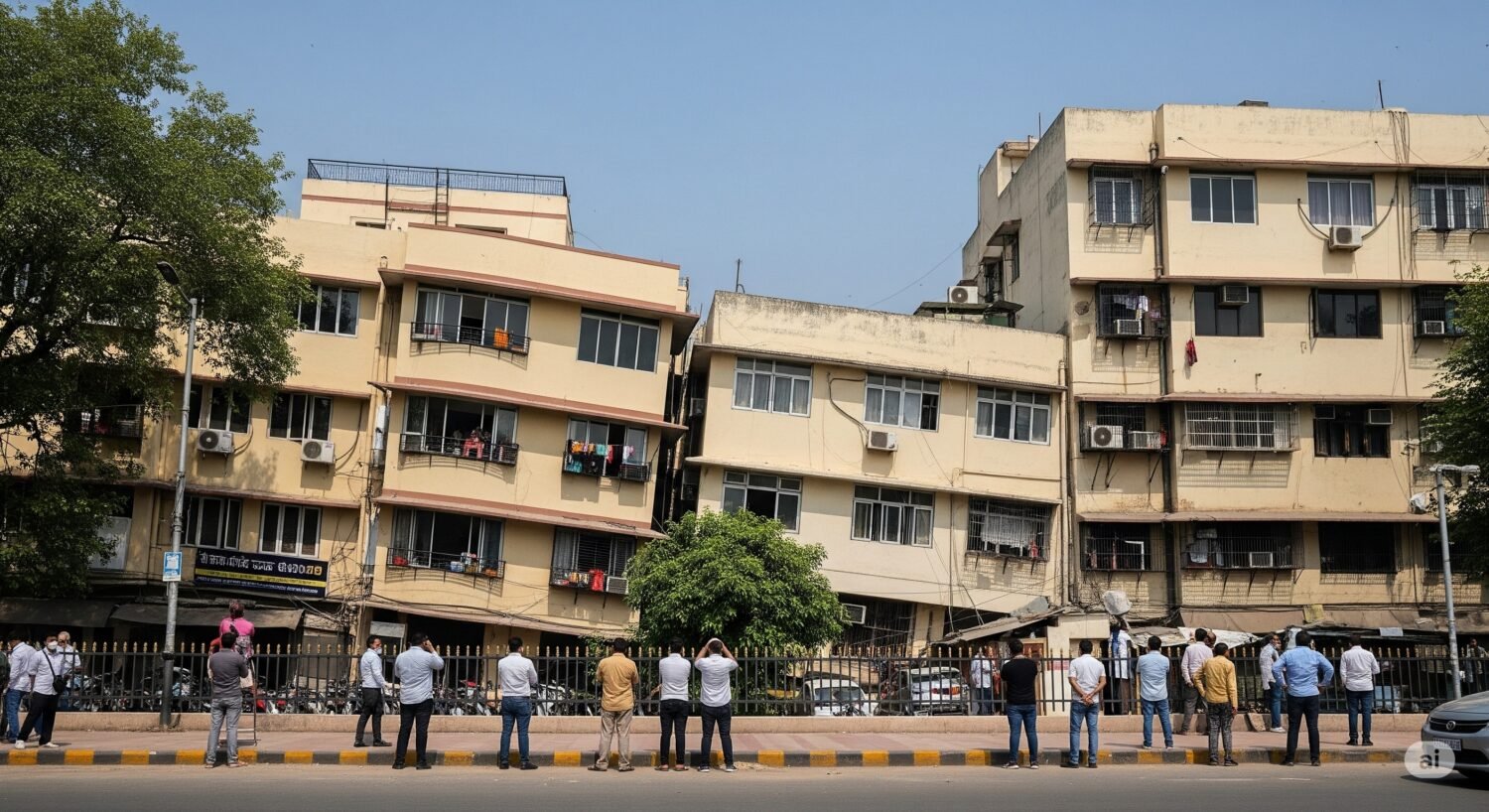Delhi’s Earthquake Jolt: Unpacking the Reasons Behind the Strong Shakes


Delhi, a bustling metropolis, often experiences tremors that, despite their seemingly low magnitude, send a noticeable jolt through the city. Recently, a 4.4 magnitude earthquake with its epicentre in Jhajjar, Haryana, caused significant alarm, prompting many residents to rush outdoors. But why does a seemingly moderate quake feel so strong in the National Capital Region (NCR)? The answer lies in a combination of geological factors, urban infrastructure, and the very ground Delhi stands on.
Delhi’s Seismic Hotspot Status
It might surprise many, but Delhi falls under Seismic Zone IV, which is categorized as a “High Damage Risk Zone.” This means the region has a significant probability of experiencing moderate to strong earthquakes. This classification isn’t arbitrary; it’s based on the city’s unique geological position.
The Himalayan Connection
The primary reason for frequent seismic activity in North India, including Delhi, is the ongoing collision between the Indian and Eurasian tectonic plates. This colossal geological dance, which began millions of years ago and continues to this day, builds immense stress in the Earth’s crust. When this stress is suddenly released, it manifests as an earthquake. While Delhi isn’t directly on the plate boundary, it’s close enough to feel the ripple effects, especially from quakes originating in the seismically active Himalayan belt.
Local Fault Lines and Shallow Depths
Beyond the large-scale plate tectonics, Delhi is also crisscrossed by several active local fault lines, such as the Delhi-Hardwar Ridge. These are zones of weakness in the Earth’s crust where even slight movements can trigger tremors. Furthermore, many earthquakes affecting Delhi are shallow, meaning their epicentre is close to the surface (often within 5-10 km depth). Shallow earthquakes tend to cause more intense shaking because the seismic waves have less distance to travel and dissipate before reaching the surface, amplifying their impact on buildings and structures.
The Role of Delhi’s Soil
Another crucial factor is the city’s soil composition. Much of Delhi-NCR is built on soft alluvial soil. When seismic waves travel through this kind of loose, unconsolidated soil, they slow down but gain amplitude, leading to a phenomenon known as “soil amplification.” This can significantly increase the intensity of ground shaking, making even a moderate earthquake feel much stronger than it would in areas with stable, rocky terrain.
Urban Vulnerability: Buildings and Density
Delhi’s rapid urbanization and high population density add another layer of vulnerability.
- Non-Earthquake Resistant Structures: A significant concern is the large number of older buildings that may not adhere to modern earthquake-resistant building codes. While codes have been in place since 1962, their enforcement, especially for older constructions, has been a challenge.
- High-Rise Buildings: Modern high-rise buildings, while designed to sway during tremors, can amplify the perceived intensity of shaking, particularly for those on upper floors.
- Narrow Lanes and Unplanned Construction: In many unauthorized colonies, narrow approaches can hinder rescue and relief efforts in the event of a major disaster.
Preparedness is Key
Given Delhi’s seismic reality, preparedness is not just an option but a necessity. Authorities are working on measures like setting up Emergency Operations Centres, training volunteers, and surveying buildings for safety. As residents, understanding these factors and knowing basic safety protocols – like Drop, Cover, and Hold On – can make a significant difference in minimizing risks during future tremors. While we can’t predict earthquakes, we can certainly prepare for them.
Recent Posts
Decoding the NSDL IPO: What Investors Need to Know
The financial world is abuzz with news of the National Securities Depository Limited (NSDL) gearing… Read More
Google Pixel 10 Pro: A New Era Dawns in India
Get ready, tech enthusiasts! Google is gearing up to make a significant splash in the… Read More
Honoring Service: PM Modi’s Regards to a Departing Vice President
Acknowledging Dedicated Service In the dynamic landscape of Indian politics, moments of transition often spark… Read More
A Nation Bids Farewell: Remembering Kerala’s Stalwart, VS Achuthanandan
Explore the life and legacy of former Kerala CM VS Achuthanandan, a political giant whose… Read More
The AI Browser Revolution: Perplexity’s Comet Takes Aim at Chrome
Perplexity AI is launching its Comet browser on Android, aiming to challenge Google Chrome's dominance… Read More
India’s Parliament Monsoon Session Kicks Off Amidst Tumult
Explore the dramatic start to India's Parliament Monsoon Session, marked by Opposition protests, key discussions,… Read More